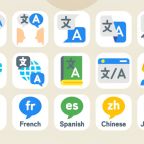
Polylang Language Switcher Complete Strategy! The definitive guide to building multilingual sites
If you want to create a multilingual site using Polylang, but are worried about the difficulty of setting up and customizing it, this article is for you!You can fully master Polylang's language switcher.This article provides clear and detailed information necessary for building a multilingual site, from basic Polylang settings to advanced customization and common troubleshooting, including how to install Polylang, add languages, translate content, and other basic operations are explained step-by-step, so even beginners will feel comfortable.
In addition, it also explains in detail how to customize the language switcher, including how to change its design and position, and how to set the display of flags. Of course,How to work with WooCommerce and popular SEO plug-insIt also covers the advantages of Polylang Pro, how it differs from the free version, and how it compares to other multilingual plug-ins, clearly indicating why you should choose Polylang and helping you choose the best plug-in for your needs.
By the end of this article, you will understand the big picture of building a multilingual site using Polylang and will be able to manage your site with confidence.
What is Polylang? Benefits of Building a Multilingual Website
Polylang is,Plugins for building multilingual sites with WordPressIt is It is simple and easy to use, and the basic multilingualization features are available in the free version, making it popular with many users. The paid version, Polylang Pro, offers more advanced features.Importance of a multilingual website
In today's globalized world, multilingual websites are becoming increasingly important. By building a multilingual site, you can reach more users, expand business opportunities, and increase brand awareness. It also helps improve the user experience by providing information optimized for each target region.For example, providing information in languages other than Japanese for foreign visitors to Japan can help attract more tourists. Also, for companies seeking to expand overseas,Multilingual site is a mustIt can be said that
The advantages of a multilingual website can be summarized as follows
| Advantages | Description. |
|---|---|
| Market expansion | Reach users around the world |
| Increase brand awareness | Building a global brand image |
| Improved user experience | Increased user satisfaction because information is available in their native language |
| Improved SEO effectiveness | Search engine optimization available in various languages |
Why Polylang?
Among the many multilingual plug-ins available, what makes Polylang the choice of many users? The main reasons are as follows- Sufficient functionality is available even in the free version.The basic multilingualization functions are available in the free version, so you can build a multilingual site at a low cost.
- Easy to operate: Intuitive interface allows even beginners to easily set up and operate the system. No complicated settings are required.
- Strong SEO: hreflang tags are automatically output, which is effective for multilingual SEO.
- Extensive ExtensionsWooCommerce: works with a variety of plug-ins, including WooCommerce.
- Active communityThe system is used by a large number of users, making it easy to gather information and troubleshoot problems.
Polylang Language Switcher Basic Settings
This section describes the basic setup for building a multilingual site using Polylang. The necessary steps to take the first step toward a multilingual site will be explained in an easy-to-understand manner.Polylang installation and activation
First, install the Polylang plugin from the WordPress admin page.Plug-ins>Add NewSearch for "Polylang" from the "Polylang" menu and click "Install Now". After installation is complete, click "Activate" to activate the plugin; if using Polylang Pro, a separate license key for the Pro version is required. Once Polylang installation and activation is complete, the configuration wizard will start. By following the wizard, you can smoothly perform basic settings. If the wizard does not appear,Settings>LanguageYou can open the settings screen fromAdding and setting languages
Polylang requires that you add the languages you want to use on your site and configure each one.Settings>LanguageOn the screen, click "Add Language" and select the desired language. When adding a language, be sure to set the correct language code, locale, flags, etc.| (data) item | Description. |
|---|---|
| language code | This code is used to identify the language, such as "ja" for Japanese and "en" for English. |
| locale | This code is a combination of language and region. For Japanese, use "ja_JP", etc. |
| flag | Flag images displayed in the language switcher. |
How to translate content
Polylang allows you to translate a variety of content, including posts, fixed pages, and custom post types. To create a translation, open the edit screen of the content you want to translate,Languages."Click the "+" button from the meta box to add a translation. Once you have added a translation, you will be able to edit the content in the respective language.Media File Translationcan also be set up for each language. Images and videos can also be set up for each language. Also,String translationfunction can also be used to translate text used in themes and plug-ins. Once the translation is complete, you can use the language switcher to switch between content in each language. The language switcher can be displayed on the site using widgets or shortcodes. The display and design can be customized.Polylang Language Switcher Customization
Polylang's language switcher is an important element of a multilingual website. Although it works well with the default settings, you can customize its design and display position to create a more user-friendly website. This section details how to customize the Polylang language switcher.Language switcher design changes
Polylang offers the flexibility to change the design of the language switcher. The main customization methods are as follows- drop down menuPolylang: Ideal for those who want to display multiple languages in a compact format, easily selected from Polylang's settings screen.
- list format: Displays each language in a list format. It features a simple design and high visibility.
- Using FlagsThe switcher can be made visually intelligible by displaying the flags corresponding to each language.
- Custom CSS: More advanced customization is possible by editing the CSS directly. For example, you can freely adjust fonts, colors, sizes, backgrounds, etc. For detailed customization instructions, seeOfficial Documentsfor more information.
Change position of language switcher
The language switcher can be placed in various locations on the website. The following is a list of typical placement locations and how to set them up.| Location | Setup Method |
|---|---|
| menu | You can use the WordPress menu feature to add a language switcher to your navigation menu. |
| widget | Polylang's language switcher widget allows you to place it in widget areas such as the sidebar or footer. |
| Editing Theme Files | You can place the code directly in the theme file (e.g. header.php) at any location. Be aware, however, that changes may be lost in theme updates. |
| short code | [polylang_langswitcher].Shortcodes can also be placed within the content of posts and fixed pages. |
Flag Display Settings
The following settings are available for displaying flags in the language switcher.- Flag SizeThe size of the flag can be adjusted on the Polylang settings page.
- Flag shapeFlag shape: You can change the shape of the flag, such as square or circle. This can also be set from the Polylang settings screen.
- custom flag: In addition to the flags provided by default, you can use your own flag images. In this case, you will need to add CSS to your theme file.
Advanced customization with custom CSS
Polylang allows you to fine-tune the design of the language switcher using custom CSS. For example, the following customizations are possible- Font ChangeLanguage: You can change the font family, size, boldness, color, etc. of the language name.
- Change background colorThe background color of the entire language switcher can be changed, as well as the background color of each language item.
- Border addition: You can add borders to the language switcher and change their color and thickness.
- Addition of hover effectDynamic effects can be added, such as changing the display on mouse-over.
Polylang Language Switcher and various theme plug-ins
Polylang is a powerful multilingual plugin on its own, but you can maximize the potential of your multilingual site by integrating it with other themes and plugins. This section describes how Polylang works with major themes, WooCommerce, and SEO plugins.Compatibility with major themes
Polylang is compatible with many WordPress themes. Compatibility with popular and widely used themes is especially important, and Polylang has been developed to be compatible with many major themes, allowing for multilingualization without compromising theme functionality.| Theme name | compatibility | remarks |
|---|---|---|
| Cocoon | period | Cocoon is a simple, highly customizable theme that integrates smoothly with Polylang; you can adjust the display position of the language switcher and other features from Cocoon's settings screen. |
| THE THOR | period | THE THOR, a highly functional and SEO-friendly theme, is also compatible with Polylang. It can maintain fast display speeds even for multilingual sites. |
| SWELL | period | SWELL, optimized for block editors, can also work with Polylang. Intuitive operation allows you to build multilingual sites. |
| JIN | period | JIN, which specializes in SEO, also works with Polylang without problems. It is also effective for SEO of multilingual sites. |
| SANGO | period | SANGO, with its sophisticated design, is also compatible with Polylang. You can maintain a beautiful design even for multilingual sites. |
Integration with WooCommerce
Polylang is a popular e-commerce pluginWooCommerceThis allows you to build a multi-lingual online store. This allows you to build a multilingual online store. By integrating Polylang with WooCommerce, you can translate any WooCommerce elements such as product names, product descriptions, and prices. You can also create multilingual shopping carts and checkout pages. Setting up a WooCommerce-Polylang integration is relatively easy: simply enable WooCommerce's translation options from Polylang's settings screen and you can build a multilingual online store.Integration with SEO plug-ins
SEO is very important when running a multilingual site, and Polylang can work with major SEO plug-ins to make multilingual SEO more efficient. Yoast SEOand ... andAll in One SEO PackYou can set title tags and meta descriptions for each language by linking with SEO plug-ins such as This allows you to set appropriate keywords in each language to maximize inflows from search engines. Also,hreflang tagPolylang automatically generates hreflang tags and inserts them into each page, which is very important for SEO of multilingual sites. Polylang automatically generates these hreflang tags and inserts them into each page, greatly reducing the time and effort required for SEO. In combination with these SEO plug-ins, Polylang provides strong SEO support for multilingual sites. Polylang can be integrated with various other plug-ins in addition to these plug-ins. By selecting the appropriate plug-ins and integrating them with Polylang according to the functions required for your multilingual site, you can achieve more effective multilingual site management.Building Advanced Multilingual Sites with Polylang Language Switcher
In addition to the standard usage of Polylang, advanced techniques for building multilingual websites will be introduced. By utilizing these techniques, you can create a more flexible, SEO-friendly, and user-friendly multilingual website.How to use different themes in different languages
Polylang allows different themes for different languages. For example, a Japanese site can use a theme with a sophisticated design, while an English site can use a simple theme. This feature is very useful for designing a website according to the culture and user preferences of the target language. To set up, first go to "Appearance" > "Themes" from the WordPress admin screen. Then activate the theme you wish to use. Then, in the Polylang settings screen, select the theme you want to assign to each language. By using different themes for different languages, you can optimize the user experience for each language. However, some themes may cause compatibility issues with Polylang.Therefore, it is recommended to check the documentation of the theme in advance or verify the operation in a test environment.Outsourced Translation and Polylang Collaboration
If your website has a large amount of content, it may be more efficient to outsource the translation, and Polylang has features to make the translation process smoother. For example,WPMLBy integrating with translation management plug-ins such as "Translation Management Plug-in", you can streamline the assignment of tasks to translators and progress management. The system also has the ability to export and import translation files, making it easy to integrate with external translation services.| method | Advantages | demerit |
|---|---|---|
| Integration with translation management plug-ins | Can streamline the translation process | Some plug-ins incur costs. |
| Export/Import translation files | Easy integration with external services | Need to manage files |
Improvement of translation quality through the use of translation memos
Polylang allows you to add notes to communicate to the translator. For example, you can tell them how to translate a particular term or cultural background to improve the accuracy of the translation.By utilizing translation memos, problems caused by mistranslations or differences in nuance can be prevented and high-quality translations can be achieved.SEO for multilingual sites
SEO is very important when running a multilingual site, and Polylang can help you generate a structure optimized for multilingual SEO. By automatically outputting hreflang tags, search engines can correctly recognize the language of each page.This will allow users of each language to access the appropriate page and improve search rankings.Keyword selection and localization
It is also important to localize content by selecting appropriate keywords in each language. By creating content that not only simply translates, but also takes into account the culture of each language and the search behavior of users, a more effective SEO strategy can be achieved. For example,AhrefsYou can find effective keywords in each language by utilizing keyword research tools such asCreation of multilingual sitemap
Creating a multilingual sitemap helps search engines better understand the structure of your site, and Polylang makes it easy with its ability to generate multilingual sitemaps.Registering a sitemap in Google Search Console will facilitate crawling and speed up indexing by search engines.Polylang Language Switcher FAQ
Polylang is a useful plugin for building multilingual websites, but some people may have various questions about its use. Here are some frequently asked questions and answers.Is the free or paid version of Polylang better?
The free version of Polylang is sufficient for basic multilingualization functions. However,If you run an e-commerce site or require more advanced customization, the paid version Polylang Pro is worth considering.| Feature | free version | Paid version (Polylang Pro) |
|---|---|---|
| Add Language | period | period |
| Content Translation | period | period |
| Customize Language Switcher | period | More advanced customization options |
| WooCommerce integration | ×x-mark (used to indicate an incorrect answer in a test, etc.) | period |
| String translation | ×x-mark (used to indicate an incorrect answer in a test, etc.) | period |
| Multiple domain/subdomain support | ×x-mark (used to indicate an incorrect answer in a test, etc.) | period |
| Premium Support | ×x-mark (used to indicate an incorrect answer in a test, etc.) | period |
What are the advantages of Polylang Pro?
Polylang Pro offers more features than the free version and makes managing a multilingual website easier and more efficient. The main benefits are as follows- Integration with WooCommerceWooCommerce elements such as: product information and cart pages can also be multilingualized.
- String translationThe strings used in themes and plug-ins can also be translated.
- Multiple domain/subdomain supportDifferent domains and subdomains can be used for each language.
- Premium SupportThe support you will receive is direct from the development team.
Comparison with other multilingual plug-ins
In addition to Polylang, there are a variety of other multilingual plugins available for WordPress. A comparison with typical plugins is shown below.| plug-in (software) | Advantages | demerit |
|---|---|---|
| Polylang | Relatively lightweight and easy to use. Even the free version has a full range of basic functions. | Compatibility issues with some themes and plug-ins may occur. |
| WPML | It is very versatile and can be used for all types of websites. | Expensive. Complex settings due to multifunctionality. |
| Weglot | Efficient translation by a combination of machine and manual translation is possible. | The free version is severely limited in functionality. High translation volume is costly. |
Polylang Language Switcher Troubleshooting
Polylang is a useful plugin for building multilingual sites, but sometimes unexpected problems can occur. This chapter details common problems and their solutions. If you encounter a problem, first calm down and try the following troubleshooting steps.What to do if the language switcher does not appear
If the language switcher does not appear, there are several possible causes. First, check the following pointsCheck Polylang settings
In Polylang's settings screen, check to see if the language switcher display is enabled. If it is set to hidden, it will naturally not be displayed. Also, make sure that the display location (menu, widget, etc.) is set correctly.Compatibility with Themes
Depending on the theme you are using, it may not be compatible with Polylang's language switcher. Check the theme documentation or contact the theme developer. In some cases, modifications to the theme may be necessary.It is important to make sure that your theme officially supports Polylang.Clearing the cache
If you are using your browser's cache or a WordPress cache plugin, try clearing the cache. You may be viewing old information that has been cached.Plug-in conflicts
In some cases, conflicts with other plug-ins may prevent the language switcher from displaying. Try temporarily disabling the other plug-ins and see if that solves the problem.In particular, be aware that conflicts are likely to occur if you are using other multilingual plug-ins at the same time.| question (e.g. on a test) | approach |
|---|---|
| Language switcher does not show up at all | Check Polylang settings, theme compatibility, cache, and plugin conflicts |
| Only appears in certain places. | Check Polylang display settings. You may also need to modify the theme's template file |
| Displayed but not functional | Check your browser's developer tools for JavaScript errors |
What to do if translations are not reflected correctly
If the translation is not reflected correctly, there are several possible causes.Saving Translated Content
Check to see if the translated content has been saved correctly. If it is saved as a draft, it must be changed to a published status.Be sure to click the "Update" button when saving changes.Clearing the cache
As with the language switcher not displaying, the cache may be causing the old translations to be displayed. Try clearing your browser's cache or WordPress cache plugin's cache.character code
If the character encoding of the source text and the target text are different, garbled characters may occur.Make sure it is unified with UTF-8.Integration with translation plug-ins
If you are using other translation plugins such as WPML at the same time, conflicts may occur. Check your settings and disable one or the other if necessary.Database Corruption
In rare cases, a corrupted WordPress database may prevent translations from being reflected correctly. Try to repair the database or restore it from a backup.Be careful with database operations and be sure to back them up before implementing them.Support resources for Polylang
If you encounter problems with Polylang, the following support resources are available- Polylang Official Documentation: Polylang's usage, configuration, and frequently asked questions.
- Polylang Official Support Forum: You can get advice from other users and developers, and report problems.
- Polylang Pro Support: Users of the paid version of Polylang Pro will receive dedicated support.
summary
This article details how to build a multilingual site using the Polylang WordPress plugin, especially customizing the language switcher.A multilingual website is essential for global business development, and Polylang can help you efficiently build a website in various languages to reach a wider audience. We hope this article will help you build a multilingual website.
MovetoJapan offers the lowest price in the industry for adding a language switcher, starting at 29,000 yen!
Please contact us for consultation on how to make your new or existing website multilingual.For more information about our services, click here.Until.









